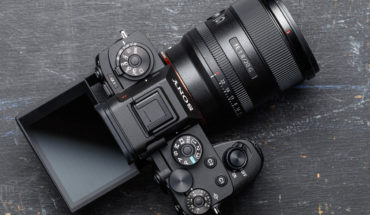
The Z7 II still has a 45.7MP full-frame BSI sensor, but it’s now backed up by dual processors compared to the single processor in its predecessor. The exterior of the camera is largely unchanged, which is fine by us: Nikon’s Z-series cameras offer some of our favorite ergonomics on the mirrorless camera market. Blessedly, though (especially for those of us that moderate online comment sections), Nikon has included dual card slots in the Z7 II for users that need immediate backup or want to easily separate their still images and video clips. See? Something good came out of 2020 after all.
The Z7 II Specifications:
- 45.7MP BSI-CMOS sensor with native ISO 64
- 4K/60p video with 93% coverage of the sensor (a ~1.08x crop)
- 5-axis in-body stabilization (3-axis with adapted F-mount lenses)
- 10 fps burst shooting with single-point AF
- 3.69M-dot EVF, 3.2″ 2.1M-dot rear screen
- -3EV focusing with F2.0 lens
- 1 CFExpress / XQD card slot, 1 UHS-II SD card slot
- New EN-EL15c battery, CIPA rated to 420 shots (LCD), 360 shots (EVF)
- Compatible with new MB-N11 battery grip with vertical controls
The Z7 II, being the high-resolution model in Nikon’s mirrorless lineup, is all about outright image quality. It remains one of the only cameras on the market that provides a low native ISO of 64: this helps maximize dynamic range for high-contrast scenes like sunset or sunrise landscapes.
Compared to…
Video and other updates
The Z7 II is rather more competent than its predecessor, and now includes 4K/60p capture with a slight (1.08x) crop. It will also output 10-bit N-Log or HDR (HLG) footage to a compatible external recorder, and you can output Raw video in 1080p if you’re using the full sensor and 4K if you’re using a cropped APS-C sized region. We’d expect good video quality, but hardcore video shooters should set their sights on the Z6 II and its oversampled 4K video which should offer much better fine detail.
And of course, there’s those dual card slots. One supports CFExpress (Type B) and XQD cards, and the other is a UHS-II compatible SD slot. The Z7 II also includes a new EN-EL15c battery, which boosts battery life to a CIPA-rated 420 shots using the rear LCD with energy saving modes disabled. In response to customer feedback, the Z7 II is compatible with a new MB-N11 vertical grip, which allows for the use of two batteries and has portrait-orientation controls built-in. Finally, from a power management point of view, you can now power the camera over its USB-C port, as well as charge it.
Lastly, we’re pleased to see that Nikon has added support for firmware updates over Wi-Fi through its SnapBridge app. This will make it easier for everyday users to get the most out of their cameras, as Nikon has been diligent about updating its camera in the past with new functions and features.
Dynamic range
As we mentioned, the Z7 II’s sensor is essentially the same as its predecessor; it uses a dual-gain design to minimize read noise above ISO 320, so that high ISO settings have lower visual noise. As a result, the ISO 100 and 200 settings (below the higher gain step which would lower dynamic range) are a little noisier in the shadows compared to higher ISO settings – above ISO 320 – using the same aperture and shutter speed. The difference is impressively small, though, and so the sensor is adding really low amounts of noise to the final image, even in the lower gain state used at low ISOs. This also means that you can save four stops of highlight detail by shooting at ISO 400 instead of ISO 6400, with the same exposure settings, and brighten selectively – while protecting highlights – in post. You’ll pay little to no extra image noise cost in doing so.
Our standard Exposure latitude test really emphasizes how little noise the camera itself is adding to your images. Even if you reduce exposure significantly, which again helps you capture additional highlight information, the Z7 II puts up a really impressive performance. We also don’t see any of the banding that could sometimes occur in the very deepest shadows with the original Z7 when exposures were pushed.
A key thing to note is that ISO 64 mode allows camera to capture more light before clipping than its rivals can. This, combined with the very low noise performance seen above, means the Z7 II can capture images with cleaner tones, all the way down into the deepest shadows. And, now the banding in the darkest tones has been resolved, this gives it an edge in terms of tonal quality and processing flexibility in situations where it’s practical to use ISO 64.





